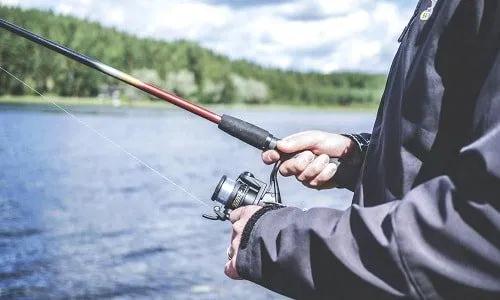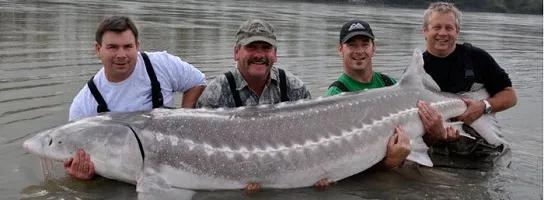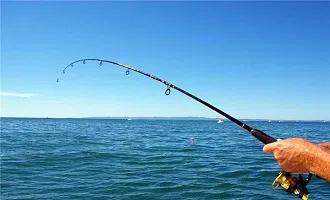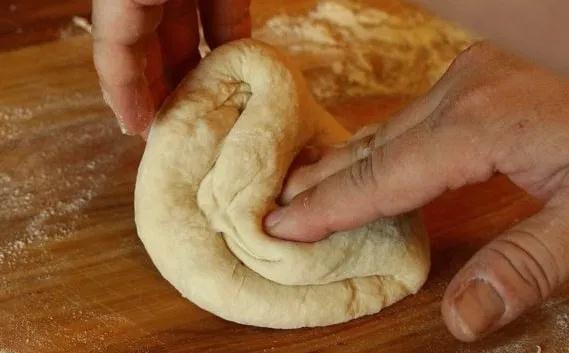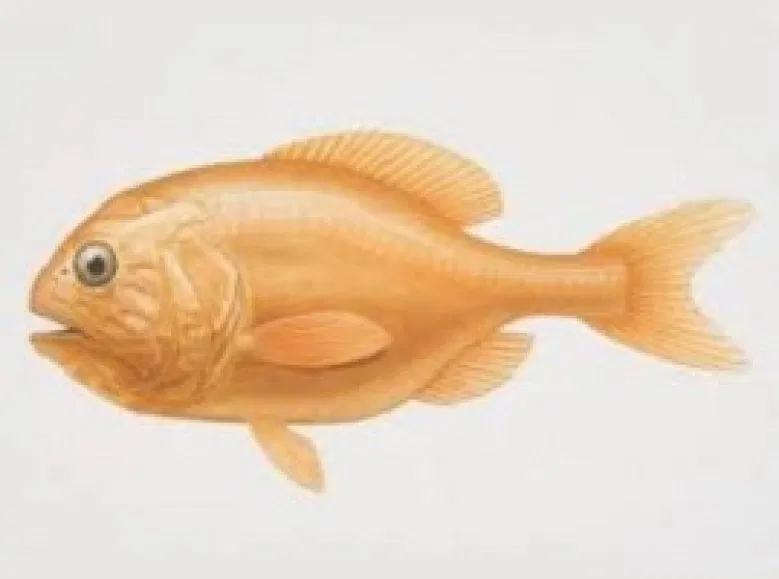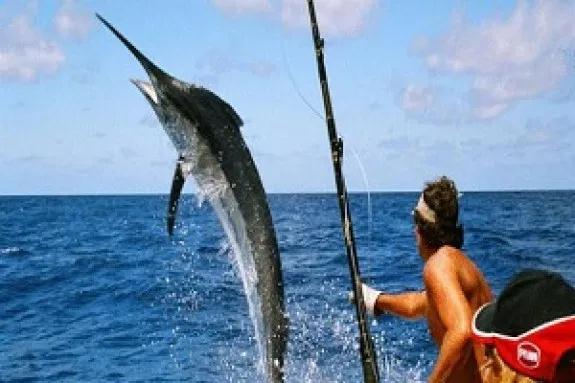best reviews metal detectors for gold
Interesting information about treasure hunters
For lovers of catching peaceful fish bream is one of the most coveted trophies. The bream grows to a solid size, so the capture of such fish brings a lot of positive emotions.
But it should be taken into account that bream - a very skittish fish. Therefore, fishing on a bream has a number of features, the knowledge of which largely determines the success of the fisherman. Below we will try to understand what to catch bream and where to look for it.
But it should be taken into account that bream - a very skittish fish. Therefore, fishing on a bream has a number of features, the knowledge of which largely determines the success of the fisherman. Below we will try to understand what to catch bream and where to look for it.
In which reservoirs can you find this fish?
Large rivers with relatively slow currents are the main habitat of the bream. In some medium plain rivers it can also be found, but there fish rarely grows to a solid size, so the fisherman often has to be satisfied with catching small underpants.
There are also breams in the big lakes. If the lake boasts clean water and the presence of unsaturated areas of the bottom, the population of bream in it can reach quite decent sizes.
And finally, you can look for the bream of reservoirs. This fish belongs to commercial, so it is often used for fishing areas.
With successful settlement, the bream grows quite quickly, and pleases the anglers with its appetite and its size.
Small breams and underwear can get hooked all over the pond - they are quite active, so often go out in shallow water, and on open areas. It is quite another thing - breams of a solid size, which are the main interest for the fisherman. This fish has to look, and look for quite a long time, because it spends most of the time in the depths.
And yet some tips for finding a large bream can be given:
During the day, bream usually does not demonstrate activity in the search for food, so it can be caught only by accident. At this time, flocks of fish stand at the depth, in the pits and lower areas of flooded river beds.
Actively eat bream begins with sunset and continues throughout the night, sometimes “capturing” a significant part of the morning. At this time, the fish come out of the pit to feeding, climbing to shallow areas, but trying to stay close to shelters.
Most often feeds bream on a dense clay bottom, covered with a thin (up to 5 cm) layer of silt. It is on this ground most of all aquatic invertebrates, which serve as a flattery forage base.
In many areas, the signs of feeding the bream are visible to the naked eye. If at sunset previously quiet reeds begin to move, and on the surface of the water there are bubbles and clouds of muti - know, this hazelflock has gone to feeding. In silence, you can hear even the characteristic “slurping” that accompanies the process of searching and eating food.
I usually catch breams either on large rivers or on reservoirs. I do not have a special strategy to find a promising place, but I can say that over time you just start to guess where the flock will be fed. And without studying the reservoir anywhere - the first time to find a bream can only be with a very large fortune.
In catching a bream, especially a trophy one, 80% of success is the choice of the right place. No bait on the bream will not force a flock of fish to come out of the secluded bottom we and come to the place of fishing: the bream is very timid, because it swims almost exclusively on “proven” routes.
The main task of the bream is to find such a route and the point at which the flock will be fed. As a rule, such places are elevations of bottom relief, located next to parking pits.
From the boat - using the simplest depth meter. If there is such an opportunity, it is worth swimming over promising areas and measuring the depth, if possible, “spread” the bottom. Do it best a few days before fishing, so as not to scare the fish.
Using a marker rod. When catching a bream, the same markers are used as when catching carp on a feeder: a special rod with a special rig allows you to check the depth and relief of the bottom. But you need to be able to use the marker, but throwing a snap with a heavy sinker can scare the pack.
Using a submersible sonar. The use of echolots, such as Diper, allows to determine the relief of the bottom and the characteristics of its coating with minimal impact on the fish. In addition, the use of sonar allows you to save a lot of time: what it takes at least an hour to use the boat, you can do in a few minutes.
In any case, you need to look for:
“Exits” from underwater pits and flooded riverbeds.
Clay terraces under the steep shores.
Rise above the general level of the bottom (so-called “tables”), on which the bream most often feeds.
The parts of the bottom on which the orie part adjoins the part covered with clay or shell.
Places approach the reeds and other aquatic vegetation either to the pits or to the eyebrows.
“Spots” of aquatic vegetation among clay areas, along which there are breams.
All my attempts to use the marker to find a promising point at which the bream will actively peck, have not brought success. That’s why I’m in favor of using a sonar with two hands. If on a familiar body of water in principle it is possible to do without it, then on one-day fishing, especially on a large reservoir, Deeper more than once and not twice helped me to find a promising “table” on which the bream took quite confidently.
Fishing on a bream is a leisurely occupation that requires silence and patience. Therefore, you need to prepare for it in advance, having picked up the optimal bait and preparing a few baits.
Bait and privada - one of the important components of success in catching bream. Without them, you will not be able to keep a flock of fish in one place for a long time, so it is necessary to feed the bream.
As a priada - the composition, which is periodically thrown into a promising point - it is best to use a variety of porridges. The best blend of bran, boiled rice and cakes with the addition of a small amount of small steam.
For the bait, steam the peas or, wheat or pearl grits, add the breadcrumbs or breadcrumbs, a spoonful of ground term and bran. You can use flavors, but they need to be dosed, otherwise we rather scare off the bream. It is better to knead the bait directly on the reservoir, using local water and clay from the shore: so we get the most natural composition, which should be thrown about half an hour before the start of fishing.
The lure of bream is used in most ways of catching. And this fish is caught:
Floating.
Donka.
On the feeder
And catching bream on the feeder, and float, and bottom fishing involve pre-feeding the place. But bait for bream is used a variety of. First of all, it is worth trying:
Bread (both white and black).
Paired pearl grits.
Peas (or dense pea porridge).
Dung worm.
It’s a maggot.
I usually catch this fish on the feeder. Before catching bream on the feeder, I knead the feed mixture: part in clay balls, and part - for laying in the feeder. After the bin, I put a dense mixture on the basis of a squeeze with the addition of boiled peas or pearles. I put on a hook either a maggot or a dung worm. The largest specimens were caught on the “sandwich.”
The dependence of the bite on the weather and the time of year
Weather app
Alas, it is not enough to know what to catch bream: this fish is capricious, because sometimes even proven bait does not seduce fish, and the flock stubbornly ignores the promising place. The fact is that the activity of bream in the search for food directly depends on the time of year, and on a number of other factors.
Figuring out how to catch a bream, you will inevitably form your own list of “secrets.” But some patterns still exist:
The first peak of the bite begins with the warming of water and goes before the beginning of spawning ban. At this time, the bream is quite careful, because the chance to catch it is only when using the thinnest and most delicate snap. At this time the fish feeds until about noon, because the bite completely disappears until late at night.
After spawning is over, the breams reach the “normal rhythm of life.” With the beginning of summer in the afternoon you can catch only a sleaper, because large fish are in the pits. Fishing on a bream begins at sunset, when flocks come out on the brows and “tables.” The cleavecan can last through the night, and often subsides about 2 hours after dawn.
On cloudy days with little wind or warm rain, bream can go out on the shallows even during the day. It is at this time it can be caught by a floaty net from the shore: the rig should be made thin and strong, because “flies” bream often mixed with smaller fish. A large specimen can break even quite a strong leash.
In windy weather, the bream also pecks, but usually outside the traditional places of “fat.” Fish can approach the steep surf shores, where water invertebrates are driven by water invertebrates.
But before the rain, with a strong reduction in pressure, there will be no bite. The hazelfish flock may not leave the pit for several days, and even throwing bait “under the nose” of the fish will not lead to a bite.
I start catching bream with the lifting of the spawning ban, and end deep in the fall. Except for the days before severe thunderstorms, biting on the evening and morning dawns is not bad. From about mid-July to mid-September you can sit all night - there is a chance to catch one or two large climes, which behave more cautiously during daylight hours.
Such occupation as fishing on a bream will not be to the taste of every fisherman. But if you at least once felt at the other end of the line active resistance of a large fish with shining sides, then indifferent to fishing will not remain! So prepare the bait, look for a promising place, and - keep quiet!.
Where and how to look for a bream?
In catching a bream, especially a trophy one, 80% of success is the choice of the right place. No bait on the bream will not force a flock of fish to come out of the secluded bottom we and come to the place of fishing: the bream is very timid, because it swims almost exclusively on “proven” routes.
The main task of the bream is to find such a route and the point at which the flock will be fed. As a rule, such places are elevations of bottom relief, located next to parking pits.
There are three ways to look for them:
From the boat - using the simplest depth meter. If there is such an opportunity, it is worth swimming over promising areas and measuring the depth, if possible, “spread” the bottom. Do it best a few days before fishing, so as not to scare the fish.
Using a marker rod. When catching a bream, the same markers are used as when catching carp on a feeder: a special rod with a special rig allows you to check the depth and relief of the bottom. But you need to be able to use the marker, but throwing a snap with a heavy sinker can scare the pack.
Using a submersible sonar. The use of echolots, such as Diper, allows to determine the relief of the bottom and the characteristics of its coating with minimal impact on the fish. In addition, the use of sonar allows you to save a lot of time: what it takes at least an hour to use the boat, you can do in a few minutes.
In any case, you need to look for:
“Exits” from underwater pits and flooded riverbeds.
Clay terraces under the steep shores.
Rise above the general level of the bottom (so-called “tables”), on which the bream most often feeds.
The parts of the bottom on which the orie part adjoins the part covered with clay or shell.
Places approach the reeds and other aquatic vegetation either to the pits or to the eyebrows.
“Spots” of aquatic vegetation among clay areas, along which there are breams.
All my attempts to use the marker to find a promising point at which the bream will actively peck, have not brought success. That’s why I’m in favor of using a sonar with two hands. If on a familiar body of water in principle it is possible to do without it, then on one-day fishing, especially on a large reservoir, Deeper more than once and not twice helped me to find a promising “table” on which the bream took quite confidently.
Bait, bait and fishing tactics
Fishing on a bream is a leisurely occupation that requires silence and patience. Therefore, you need to prepare for it in advance, having picked up the optimal bait and preparing a few baits.
Bait and privada - one of the important components of success in catching bream. Without them, you will not be able to keep a flock of fish in one place for a long time, so it is necessary to feed the bream.
As a priada - the composition, which is periodically thrown into a promising point - it is best to use a variety of porridges. The best blend of bran, boiled rice and cakes with the addition of a small amount of small steam.
For the bait, steam the peas or, wheat or pearl grits, add the breadcrumbs or breadcrumbs, a spoonful of ground term and bran. You can use flavors, but they need to be dosed, otherwise we rather scare off the bream. It is better to knead the bait directly on the reservoir, using local water and clay from the shore: so we get the most natural composition, which should be thrown about half an hour before the start of fishing.
The lure of bream is used in most ways of catching. And this fish is caught:
Floating.
Donka.
On the feeder
And catching bream on the feeder, and float, and bottom fishing involve pre-feeding the place. But bait for bream is used a variety of. First of all, it is worth trying:
Bread (both white and black).
Paired pearl grits.
Peas (or dense pea porridge).
Dung worm.
It’s a maggot.
I usually catch this fish on the feeder. Before catching bream on the feeder, I knead the feed mixture: part in clay balls, and part - for laying in the feeder. After the bin, I put a dense mixture on the basis of a squeeze with the addition of boiled peas or pearles. I put on a hook either a maggot or a dung worm. The largest specimens were caught on the “sandwich.”
The dependence of the bite on the weather and the time of year
Weather app
Alas, it is not enough to know what to catch bream: this fish is capricious, because sometimes even proven bait does not seduce fish, and the flock stubbornly ignores the promising place. The fact is that the activity of bream in the search for food directly depends on the time of year, and on a number of other factors.
Figuring out how to catch a bream, you will inevitably form your own list of “secrets.” But some patterns still exist:
The first peak of the bite begins with the warming of water and goes before the beginning of spawning ban. At this time, the bream is quite careful, because the chance to catch it is only when using the thinnest and most delicate snap. At this time the fish feeds until about noon, because the bite completely disappears until late at night.
After spawning is over, the breams reach the “normal rhythm of life.” With the beginning of summer in the afternoon you can catch only a sleaper, because large fish are in the pits. Fishing on a bream begins at sunset, when flocks come out on the brows and “tables.” The cleavecan can last through the night, and often subsides about 2 hours after dawn.
On cloudy days with little wind or warm rain, bream can go out on the shallows even during the day. It is at this time it can be caught by a floaty net from the shore: the rig should be made thin and strong, because “flies” bream often mixed with smaller fish. A large specimen can break even quite a strong leash.
In windy weather, the bream also pecks, but usually outside the traditional places of “fat.” Fish can approach the steep surf shores, where water invertebrates are driven by water invertebrates.
But before the rain, with a strong reduction in pressure, there will be no bite. The hazelfish flock may not leave the pit for several days, and even throwing bait “under the nose” of the fish will not lead to a bite.
I start catching bream with the lifting of the spawning ban, and end deep in the fall. Except for the days before severe thunderstorms, biting on the evening and morning dawns is not bad. From about mid-July to mid-September you can sit all night - there is a chance to catch one or two large climes, which behave more cautiously during daylight hours.
Such occupation as fishing on a bream will not be to the taste of every fisherman. But if you at least once felt at the other end of the line active resistance of a large fish with shining sides, then indifferent to fishing will not remain! So prepare the bait, look for a promising place, and - keep quiet!.
what does discrimination mean on a metal detector
Very powerful yet simple home made metal detector DIY
Simple metal detector on two chips NE 555
Smartphone Homemade metal detector
Tesoro Tejon vs Garrett ACE 250 discrimination test
Very powerful yet simple home made metal detector DIY
Simple metal detector on two chips NE 555
Smartphone Homemade metal detector
Tesoro Tejon vs Garrett ACE 250 discrimination test
Video how to make a metal detector
Where to look for a metal detector
Where to look with a metal detector
Where to dig with a metal detector by law
Where to find a metal detector
Where to look for a metal detector
Where to find a metal detector
What a metal detector is for
How to choose a metal detector
How to choose a metal detector to search
How to look without a metal detector
How to look for a metal detector
What's the name of the metal detector
How to find gold metal detector
How to find metal detector
How to set up a metal detector
How to set up a metal detector
How to set up a garrett metal detector
How to set up a metal detector x terra 705
How to set up a metal detector garrett
How to set up a metal detector
How to check the metal detector
How to pass a metal detector
How the metal detector works
As a metal detector itself
How to make a metal detector at home
How to make a reel on a metal detector
How to make a metal detector pirate
How to make a metal detector with your hands at home
How to make a powerful metal detector
How to make a simple metal detector
How to make a homemade metal detector
How to assemble a metal detector pirate
Stores where metal detectors are sold
Metal detector for gold how to choose
Metal detector how to choose to search for gold
What to find a metal detector
What they find as a metal detector
What is a metal detector
Active hobbies
Bounty Hunter metal detectors
buy metal detector
Minelab metal detectors
coin collecting
compare metal detectors
Fisher metal detectors
Fishing skills
Where to look for a metal detector
Where to look with a metal detector
Where to dig with a metal detector by law
Where to find a metal detector
Where to look for a metal detector
Where to find a metal detector
What a metal detector is for
How to choose a metal detector
How to choose a metal detector to search
How to look without a metal detector
How to look for a metal detector
What's the name of the metal detector
How to find gold metal detector
How to find metal detector
How to set up a metal detector
How to set up a metal detector
How to set up a garrett metal detector
How to set up a metal detector x terra 705
How to set up a metal detector garrett
How to set up a metal detector
How to check the metal detector
How to pass a metal detector
How the metal detector works
As a metal detector itself
How to make a metal detector at home
How to make a reel on a metal detector
How to make a metal detector pirate
How to make a metal detector with your hands at home
How to make a powerful metal detector
How to make a simple metal detector
How to make a homemade metal detector
How to assemble a metal detector pirate
Stores where metal detectors are sold
Metal detector for gold how to choose
Metal detector how to choose to search for gold
What to find a metal detector
What they find as a metal detector
What is a metal detector
Active hobbies
Bounty Hunter metal detectors
buy metal detector
Minelab metal detectors
coin collecting
compare metal detectors
Fisher metal detectors
Fishing skills
Welcome to you, fish lovers. Every avid fisherman dreams not of a bountiful catch, not a bunch of caught little things, but a large specimen […]
Take the bait, spinning - and go fishing!” - the principle of fishing most people in our world. And only the real masters of rod[…]
The dough is a pretty catchy nozzle, especially on fishing in cold water. Naturally, it does not always work, and more often fish prefers animal […]
For lovers of catching peaceful fish bream is one of the most coveted trophies. The bream grows to a solid size, so the capture of […]
Fishing is probably very close for many, even people who do not particularly like to fish with pleasure go with the company of fishermen just […]
It’s hard to say when the first guy caught his fish on a handler equipped with a hook with bait. Our distant ancestors did not[…]
Comments & Responses
Leave a Reply
Your email address will not be published. Required fields are marked *
Comment
Leave a Reply
Your email address will not be published. Required fields are marked *
Comment
Name *
Email *
Website
What is a metal detector and how it works
How the metal detector works and more for beginners
What is a metal detector and how does it work?
How manual and arched metal detector works
Best metal detector for gold
What can be found with a metal detector?
What can be found with a ground metal detector
Options for balancing the ground of metal detectors
What benefits can be brought to treasure hunters of downpours
What can you find with a metal detector?
How to use a metal detector and what to find
What can i find with a metal detector?
Looking for a treasure without a metal detector
Finds that can be made with a metal detector
Is it possible to find a treasure in Estonia and what to do if something valuable has fallen into your hands?
Named places where in the suburbs with a high probability you can find a treasure
What and where can be found with a metal detector?
How the metal detector works and more for beginners
What is a metal detector and how does it work?
How manual and arched metal detector works
Best metal detector for gold
What can be found with a metal detector?
What can be found with a ground metal detector
Options for balancing the ground of metal detectors
What benefits can be brought to treasure hunters of downpours
What can you find with a metal detector?
How to use a metal detector and what to find
What can i find with a metal detector?
Looking for a treasure without a metal detector
Finds that can be made with a metal detector
Is it possible to find a treasure in Estonia and what to do if something valuable has fallen into your hands?
Named places where in the suburbs with a high probability you can find a treasure
What and where can be found with a metal detector?
